12 books about Electric power transmission
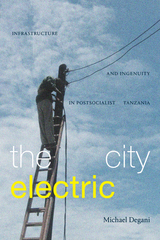
The City Electric
Infrastructure and Ingenuity in Postsocialist Tanzania
Michael Degani
Duke University Press, 2022
Over the last twenty years of neoliberal reform, the power supply in Dar es Salaam, Tanzania’s metropolis, has become less reliable even as its importance has increased. Though mobile phones, televisions, and refrigerators have flooded the city, the electricity required to run these devices is still supplied by the socialist-era energy company Tanesco, which is characterized by increased fees, aging infrastructure, and a sluggish bureaucracy. While some residents contemplate off-grid solutions, others repair, extend, or tap into the state network with the assistance of freelance electricians or moonlighting utility employees. In The City Electric Michael Degani explores how electricity and its piracy has become a key site for urban Tanzanians to enact, experience, and debate their social contract with the state. Moving from the politics of generation contracts down to the street-level experience of blackouts and disconnection patrols, he reveals the logics of infrastructural modification and their effects on everyday life. As politicians, residents, electricians, and utility inspectors all redistribute flows of payment and power, they reframe the energy grid both as a technical system and as an ongoing experiment in collective interdependence.
[more]

Electricity Distribution Network Design
E. Lakervi
The Institution of Engineering and Technology, 2003
Distribution networks represent a huge capital investment. To make sensible decisions about their investments, electricity utilities need to form clear-cut design policies and adopt the most accurate systemdesign procedures.
[more]

Flexible AC Transmission Systems (FACTS)
Yong Hua Song
The Institution of Engineering and Technology, 1999
The rapid development of power electronics technology provides exciting opportunities to develop new power system equipment for better utilisation of existing systems. Deregulation of the supply industry worlwide, and the resulting competition, is forcing utilities to operate their facilities at ever higher efficiency, driving this trend. During the last decade, a number of control devices under the term flexible ac transmission systems (FACTS) technology have been proposed and implemented. This book provides a comprehensive guide to FACTS, covering all the major aspects in research and development of FACTS technologies. Various real-world applications are also included to demonstrate the issues and benefits of applying FACTS. Written by international experts in the field from both industry and academia, this book will be a useful reference for professional engineers involved in the operation and control of modern power systems. It will also be of value to postgraduate students and researchers.
[more]
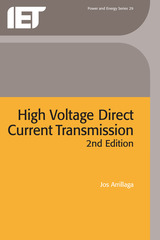
High Voltage Direct Current Transmission
Jos Arrillaga
The Institution of Engineering and Technology, 1998
Since the first edition of this book in 1983, HVDC technology has continued to expand and few power systems can now escape its influence. This thoroughly revised text develops the coverage in the first edition, describing the variety of reasons justifying the use of DC transmission as well as the basic concepts and techniques involved in the AC-DC and DC-AC conversion processes. It has been fully updated and enlarged to include descriptions of the widening applications of DC, the current state-of-the-art thyristors and other semiconductor devices, and the new developments that continue to make HVDC a competitive technology.
[more]
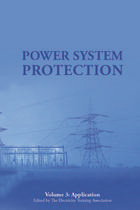
Power System Protection
Application, Volume 3
The Electricity Training Association Electricity Training Association
The Institution of Engineering and Technology, 1995
The worldwide growth in demand for electricity has forced the pace of developments in electrical power system design to meet consumer needs for reliable, secure and cheap supplies. Power system protection, as a technology essential to high quality supply, is widely recognised as a specialism of growing and often critical importance, in which power system needs and technological progress have combined to result in rapid developments in policy and practice in recent years. In the United Kingdom, the need for appropriate training in power system protection was recognised in the early 1960s with the launch of a correspondence course from which these books emerged and have since developed designed to meet the needs of protection staff throughout the world.
[more]
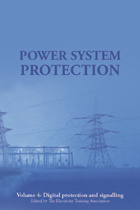
Power System Protection
Digital protection and signalling, Volume 4
The Electricity Training Association Electricity Training Association
The Institution of Engineering and Technology, 1995
The worldwide growth in demand for electricity has forced the pace of developments in electrical power system design to meet consumer needs for reliable, secure and cheap supplies. Power system protection, as a technology essential to high quality supply, is widely recognised as a specialism of growing and often critical importance, in which power system needs and technological progress have combined to result in rapid developments in policy and practice in recent years. In the United Kingdom, the need for appropriate training in power system protection was recognised in the early 1960s with the launch of a correspondence course from which these books emerged and have since developed designed to meet the needs of protection staff throughout the world.
[more]
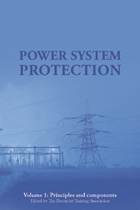
Power System Protection
Principles and components, Volume 1
The Electricity Training Association Electricity Training Association
The Institution of Engineering and Technology, 1995
The worldwide growth in demand for electricity has forced the pace of developments in electrical power system design to meet consumer needs for reliable, secure and cheap supplies. Power system protection, as a technology essential to high quality supply, is widely recognised as a specialism of growing and often critical importance, in which power system needs and technological progress have combined to result in rapid developments in policy and practice in recent years. In the United Kingdom, the need for appropriate training in power system protection was recognised in the early 1960s with the launch of a correspondence course from which these books emerged and have since developed designed to meet the needs of protection staff throughout the world.
[more]
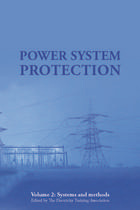
Power System Protection
Systems and methods, Volume 2
The Electricity Training Association Electricity Training Association
The Institution of Engineering and Technology, 1995
The worldwide growth in demand for electricity has forced the pace of developments in electrical power system design to meet consumer needs for reliable, secure and cheap supplies. Power system protection, as a technology essential to high quality supply, is widely recognised as a specialism of growing and often critical importance, in which power system needs and technological progress have combined to result in rapid developments in policy and practice in recent years. In the United Kingdom, the need for appropriate training in power system protection was recognised in the early 1960s with the launch of a correspondence course from which these books emerged and have since developed designed to meet the needs of protection staff throughout the world.
[more]
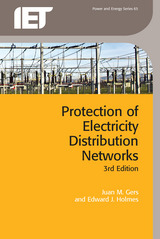
Protection of Electricity Distribution Networks
Juan M. Gers
The Institution of Engineering and Technology, 2011
High quality electrical service is everyday more stringent in utilities and industrial facilities around the world. One of the main players to achieve this is the protection system, which has to be reliable, fast and with a good cost/benefit ratio. This book refers to most aspects of electrical protections, with emphasis on Distribution Systems. Protection of generation and transmission systems are also treated in the text. References to modern topics such as the Distributed Generation, Smart Grid and Standard IEC 61850 have been introduced. Written by two well experienced engineers who combine a comprehensive theoretical background with examples and exercises, this book will allow the reader to easily follow the ideas explored. The book will be valuable to pre and postgraduate students, design, maintenance and consulting engineers as well as instructors looking for proper references.
[more]
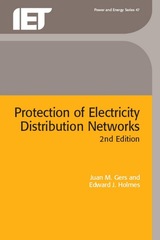
Protection of Electricity Distribution Networks, 2nd Edition
Juan M. Gers
The Institution of Engineering and Technology, 2004
Written by two practicing electrical engineers, this second edition of the bestselling Protection of Electricity Distribution Networks offers both practical and theoretical coverage of the technologies, from the classical electromechanical relays to the new numerical types, which protect equipment on networks and in electrical plants.
A properly coordinated protection system is vital to ensure that an electricity distribution network can operate within preset requirements for safety for individual items of equipment, staff and public, and the network overall. Suitable and reliable equipment should be installed on all circuits and electrical equipment and to do this, protective relays are used to initiate the isolation of faulted sections of a network in order to maintain supplies elsewhere on the system. This then leads to an improved electricity service with better continuity and quality of supply.
A properly coordinated protection system is vital to ensure that an electricity distribution network can operate within preset requirements for safety for individual items of equipment, staff and public, and the network overall. Suitable and reliable equipment should be installed on all circuits and electrical equipment and to do this, protective relays are used to initiate the isolation of faulted sections of a network in order to maintain supplies elsewhere on the system. This then leads to an improved electricity service with better continuity and quality of supply.
[more]
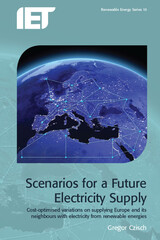
Scenarios for a Future Electricity Supply
Cost-optimised variations on supplying Europe and its neighbours with electricity from renewable energies
Gregor Czisch
The Institution of Engineering and Technology, 2011
This book pursues the fundamental idea of using renewable energies in a rational and economic way in order to develop a climate-friendly electricity supply. As the most cost efficient solution, an electricity network for the whole of Europe and parts of Africa and Asia must be found. The sources of renewable and partly decentralised electricity generation could be connected in a comprehensive power supply to meet the electricity needs of an entire region.
[more]
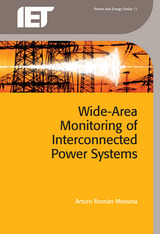
Wide Area Monitoring of Interconnected Power Systems
Arturo Román Messina
The Institution of Engineering and Technology, 2015
This book provides a compact yet comprehensive treatment of advanced data-driven signal processing techniques for the analysis and characterization of both ambient power system data and transient oscillations resulting from major disturbances. Inspired by recent developments in multi-sensor data fusion, multi-temporal data assimilation techniques for power system monitoring are proposed and tested in the context of modern wide-area monitoring system architectures. Recent advances in understanding and modeling nonlinear, time-varying power system processes are reviewed and factors affecting the performance these techniques are discussed.
[more]
READERS
Browse our collection.
PUBLISHERS
See BiblioVault's publisher services.
STUDENT SERVICES
Files for college accessibility offices.
UChicago Accessibility Resources
home | accessibility | search | about | contact us
BiblioVault ® 2001 - 2024
The University of Chicago Press









